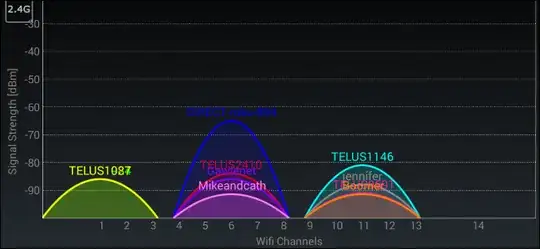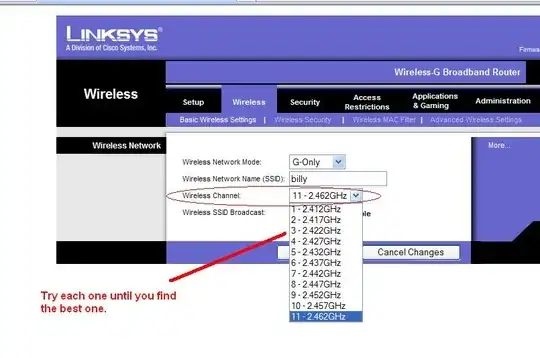It is suggested to select form the least crowded of the 1-6-11
Source (Here)
If you go with anything else, you can seriously reduce overall bandwidth.
Does your Wireless Router not have that the option of auto channel select?
(Summary of the Link Provided)
Test Results
Cisco performed tests to see the interference in a four-channel
environment. The tests were conducted with four Cisco Aironet 1200
access points and four Cisco Aironet 350 clients, all running 802.11b
at 11 Mbps. To help simulate the physical separation between devices,
the access points and clients were set at 5-mW transmit power and
spaced about 10 feet apart.
The throughput was measured by the average of all four clients
simultaneously passing a 50-MB file five times. In all combined tests
there was one client to each of the four access points. In the
stand-alone test for benchmark comparisons, all four access points and
all four clients were on. However, only one client was in the process
of sending a 50-MB file using FTP.
Testing included two different scenarios:
- Four North American access points, two using channel 1, the third using channel 6, and the fourth using channel 11
Note In this model, the first two access points had to share the RF
because they were on the same channel.
- Four North American access points using channels 1, 4, 8, and 11
Table 1 displays the results of the two tests. Note that even when two
access points shared channel 1, the overall performance was greater
than in the four-channel scenario. This is because the CSMA protocol
created a holdoff when the clients on the same channel decoded that
the interference was another 802.11 signal. In the four-channel
scenario, the client could not decode the interfering signal, reacted
as if it was low-level noise rather than a holdoff, and sent the
packet. This resulted in a collision and a retransmission on both
clients.
Table 1 Result Summary Showing Average Throughput per Client
Channels / Throughput (KB)
1, 1, 6, and 11 / 601.1
1, 4, 8,
and 11 / 348.9
Conclusion
Many have long recommended a three-channel approach to provide
nonoverlapping channels. We still recommend such installations for
2.4-GHz WLANs, for both 802.11b and 802.11g technologies. A four-channel scheme can cause severe issues when the system is brought
online and the number of users starts to increase.
In a four-channel design, the signal of one device is noise to another
device. Even in a design where a channel 1 cell would never overlap a
channel 4 cell, for example, you must still account for clients
transmitting that are not in the same location as the access point. By
looking at only the access points, you are ignoring the majority of
radios in your network. Virtually all new radio deployments support
802.11g and/or 802.11a and thus OFDM, which has much more sideband energy than 802.11b.
If you design a system with four channels, the risk of interference
between cells greatly increases, resulting in poor performance and
lower throughput. As the volume of users and bandwidth needs increase,
problems will slowly arise, making it necessary to resolve the issue
at a later date. Start by using three nonoverlapping, noninterfering
channels.

